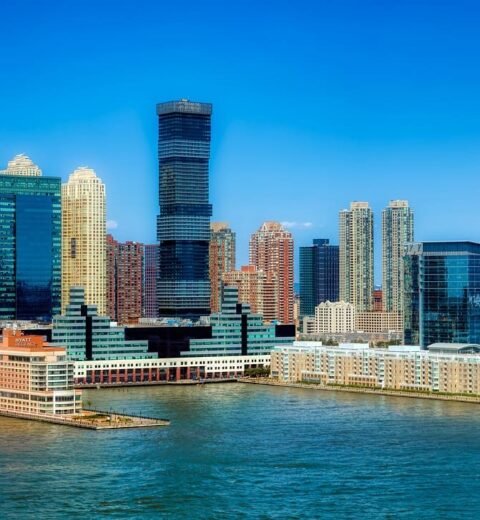Introduction:
Noise pollution, an unwanted and disruptive sound, has become an omnipresent issue in modern society, affecting both urban and rural environments. As our world becomes increasingly industrialized and populated, the sources of noise pollution continue to multiply. This 3000-word article delves into the various sources of noise pollution, shedding light on the causes, impacts, and potential solutions to this pervasive environmental problem.
I. Transportation-Related Sources:
Road Traffic Noise: a. Vehicle Engines: The combustion engines of automobiles, trucks, and motorcycles generate significant noise, especially during acceleration and deceleration. b. Tire Friction: The interaction of vehicle tires with the road surface produces noise, particularly on poorly maintained roads.
Aircraft Noise: a. Jet Engines: Commercial and military aircraft produce intense noise during takeoff and landing phases, affecting communities surrounding airports. b. Sonic Booms: Supersonic aircraft generate shockwaves known as sonic booms, which can be highly disruptive to people and wildlife.
Railway Noise: a. Train Engines: Locomotives and trains emit noise from engines and wheels, impacting both residents and wildlife near railway tracks. b. Train Whistles and Horns: Audible warning signals, such as train whistles and horns, contribute to noise pollution in populated areas.
Maritime Noise: a. Ship Engines: Large vessels, including cargo ships and cruise liners, emit noise due to engine operations and propeller movement, affecting marine life.\
II. Industrial and Construction Activities:
Factory and Machinery Noise: a. Heavy Machinery: Industries utilizing heavy machinery, such as manufacturing plants and construction sites, generate continuous noise during operation. b. Processing Equipment: Equipment used in industrial processes, such as compressors and grinders, contributes to overall industrial noise pollution.
Construction Noise: a. Drilling and Piling: Construction activities involving drilling and piling foundations for buildings and infrastructure can produce high-intensity noise. b. Demolition: The dismantling of structures during demolition generates substantial noise pollution.
Power Generation: a. Power Plants: Various power generation facilities, including coal-fired and nuclear power plants, produce noise during electricity production. b. Wind Turbines: While renewable, wind turbines generate noise as their blades rotate, impacting nearby communities.
III. Urbanization and Human Activities:
Residential Noise: a. Household Appliances: Noisy household appliances, such as vacuum cleaners, blenders, and lawnmowers, contribute to residential noise pollution. b. Loud Music and Parties: Social gatherings, parties, and loud music from personal devices contribute to noise pollution in residential areas.
Commercial Noise: a. Restaurants and Bars: Restaurants and bars with outdoor seating or live entertainment can be significant sources of noise pollution in urban areas. b. Commercial Establishments: Businesses like shopping malls and entertainment venues can generate noise from customers, ventilation systems, and equipment.
IV. Recreational and Public Events:
Events and Festivals: a. Concerts and Music Festivals: Large-scale music events produce high decibel levels, impacting nearby neighborhoods. b. Sporting Events: Stadiums and sports venues generate noise from cheering crowds, public address systems, and entertainment activities.
Fireworks: a. Celebratory Fireworks: Fireworks displays, while visually appealing, produce loud explosions that can cause noise pollution during festivities.
V. Miscellaneous Sources:
Public Transportation: a. Buses and Trains: Public transportation systems contribute to noise pollution, especially in densely populated urban areas.
Air Conditioners and HVAC Units: a. Residential and Commercial Air Conditioners: HVAC systems in buildings and homes can emit noise, affecting nearby residents.
Animals and Natural Sources: a. Wildlife Calls: In natural environments, animal calls and mating sounds can contribute to noise pollution. b. Thunderstorms: Thunder and lightning during storms generate noise that can disturb communities.
Impacts of Noise Pollution:

Human Health: Chronic exposure to noise pollution can lead to hearing impairment, stress, sleep disturbances, cardiovascular issues, and cognitive problems.
Wildlife: Noise pollution disrupts the communication, breeding, and feeding patterns of wildlife, leading to habitat displacement and reduced biodiversity.
Mental Well-being: Excessive noise can cause psychological issues like anxiety, depression, and decreased quality of life.
Learning and Education: Noise pollution in schools and educational institutions can hinder academic performance and cognitive development in students.
Mitigation Strategies(Noise Pollution):
Urban Planning: Proper urban planning can separate residential areas from noisy industrial and transportation zones, reducing noise exposure.
Noise Barriers: Installing noise barriers along highways and railways can mitigate noise levels for nearby communities.
Low-Noise Technologies: Encouraging the adoption of quieter technologies in transportation and industries can curb noise pollution.
Noise Regulations: Implementing and enforcing strict noise regulations can control noise levels in different settings.
Public Awareness: Creating awareness about noise pollution and its consequences can lead to behavioral changes that reduce noise pollution.
Industrial noise
Industrial noise is a significant contributor to noise pollution in urban and industrialized areas. It emanates from various industrial activities and machinery used in manufacturing, processing, and construction processes. The noise generated by industrial operations can be continuous, intermittent, or impulsive, depending on the type of machinery and its operation.
Causes of Industrial Noise:
Heavy Machinery: Industries that employ heavy machinery, such as manufacturing plants, metalworking facilities, and mining operations, produce constant noise during their operation. Equipment like compressors, pumps, and generators contribute to the overall noise levels.
Construction Activities: Construction sites are notorious for generating high-intensity noise due to activities like drilling, piling, and hammering. The use of heavy construction equipment, such as bulldozers and excavators, can lead to loud noise emissions.
Processing Equipment: In industries involved in material processing and production, machines like grinders, mixers, and conveyors create noise as they handle raw materials and produce goods.
Factory Operations: Manufacturing facilities and factories are bustling environments where multiple machines work simultaneously, leading to combined noise output.
Impacts of Industrial Noise:
Health and Safety Concerns: Prolonged exposure to industrial noise can lead to hearing loss, tinnitus, and other hearing-related issues among workers. Employers must implement hearing protection measures to safeguard the health and safety of their workforce.
Workplace Productivity: High noise levels in industrial settings can interfere with communication, reducing productivity and increasing the risk of accidents due to miscommunication or failure to hear warning signals.
Community Disturbance: Industrial noise can extend beyond factory boundaries, affecting nearby residential areas and communities. This can lead to public complaints, reduced property values, and a decline in the overall quality of life for residents.
Environmental Impact: Industrial noise pollution can disturb wildlife and ecosystems, especially if industrial facilities are located near natural habitats. Noise disruption can alter animal behavior, migration patterns, and feeding habits.
Mitigation of Industrial Noise:
Noise Barriers and Enclosures: Installing noise barriers and enclosing noisy machinery can help contain and reduce the spread of industrial noise, both within the factory premises and in surrounding areas.
Soundproofing and Vibration Isolation: Soundproofing materials can be used to reduce noise emissions from machinery, and vibration isolation techniques can minimize structural vibrations that contribute to noise propagation.
Maintenance and Upgrades: Regular maintenance and periodic upgrades of industrial equipment can help reduce noise levels. Newer, quieter technologies can replace older, noisier machinery.
Administrative Controls: Implementing work schedules that stagger noisy activities or relocating noisy operations away from residential areas can reduce the impact of industrial noise on nearby communities.
Regulatory Compliance: Governments often impose noise regulations and standards on industrial activities to ensure that noise emissions stay within acceptable limits. Industrial facilities must comply with these regulations to mitigate noise pollution.
Conclusion:
Noise pollution stems from a myriad of sources, impacting human health, wildlife, and the environment. Addressing this pervasive issue requires collective efforts, incorporating urban planning, technological advancements, and regulatory measures. By understanding the sources of noise pollution and implementing effective mitigation strategies, we can create a quieter and healthier living environment for present and future generations.
Discover more from EMMOCEB
Subscribe to get the latest posts sent to your email.






